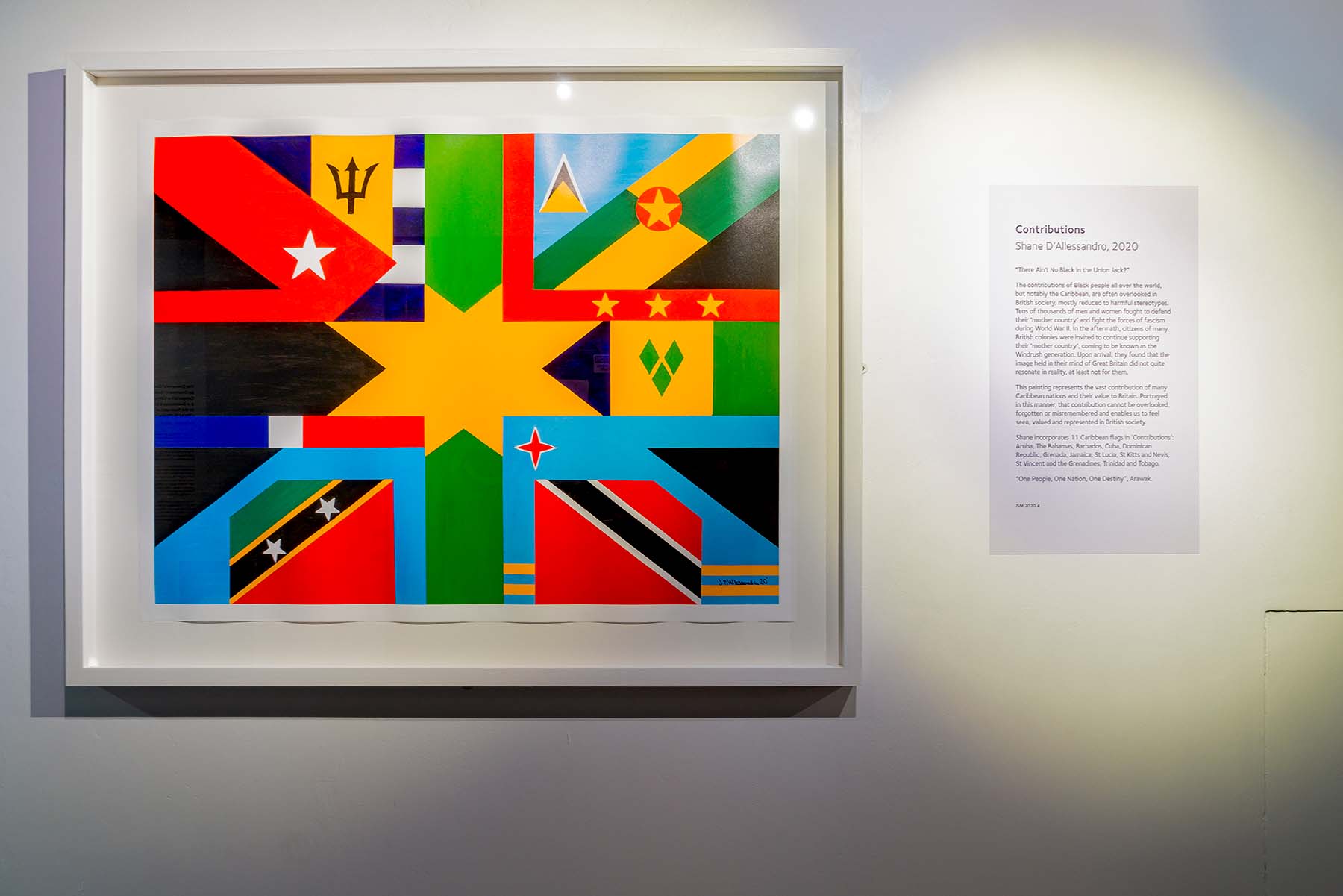
Contributions – An Ode to Windrush
Shane D’Allessandro breaks down his artwork 'Contributions' which sits in the International Slavery Museum and explains how each country represented has significantly helped the growth of the UK.
.jpg)
My painting reimagines the British Flag to encompass the black Caribbean communities that, like many other communities, have given and contributed so much, often without acknowledgement or thanks. Whilst not including every Caribbean flag within my painting, I hope that it’s still able to invoke feelings of solidarity for all black peoples in this country irrespective of where they’re from.

What we’ve now come to know as the ‘Windrush Generation’ now refers to the period of post-world war two migration of nearly half a million people from the Caribbean to Britain. This mass wave of migration was triggered by both mounting labour shortages coupled with the British Nationality Act of 1948 which granted by extension all British colonial citizens the right to work and settle in Britain.
What often isn’t recognized is that the theme of migration has been a constant for Caribbean communities ever since the mid-19th century. Caribbean citizens demonstrated huge ambition and industry with work being sought out in both the USA and many mainland south American nations in need of skilled labour where the migration laws were quite relaxed at the time. Aside from Caribbean seafarers, students on scholarships or in the rare instance of activist Marcus Garvey, the Jamaican born pan Africanist who had decided to settle on British shores, migration from the Caribbean to the UK had been sparse. That all changed with the passing of the British Nationality Act of 1948 and the ever-increasing restrictions on migration to the United States.
In June 1948, over 1000 people from various Caribbean islands descended upon Tilbury docks in the hope of a brighter future for themselves and their families, many of the men aboard only able to send for their wives and children after securing work and lodgings, quite a tall task in a society where ‘No Blacks, No dogs, No Irish’ often papered the walls of lettings agencies and job shops, but nevertheless many spirited efforts persevered.
The Windrush Generation serves as an important reminder that Britain has continually been in a state of flux for generations, constantly evolving and benefitting from the contributions of many diverse communities, in many instances to the detriment of the expatriate themselves.
I’ve written a few words about each island and how they relate to the legacy of the Windrush Generation and more widely the Contributions that have been made both pre and post WW2.
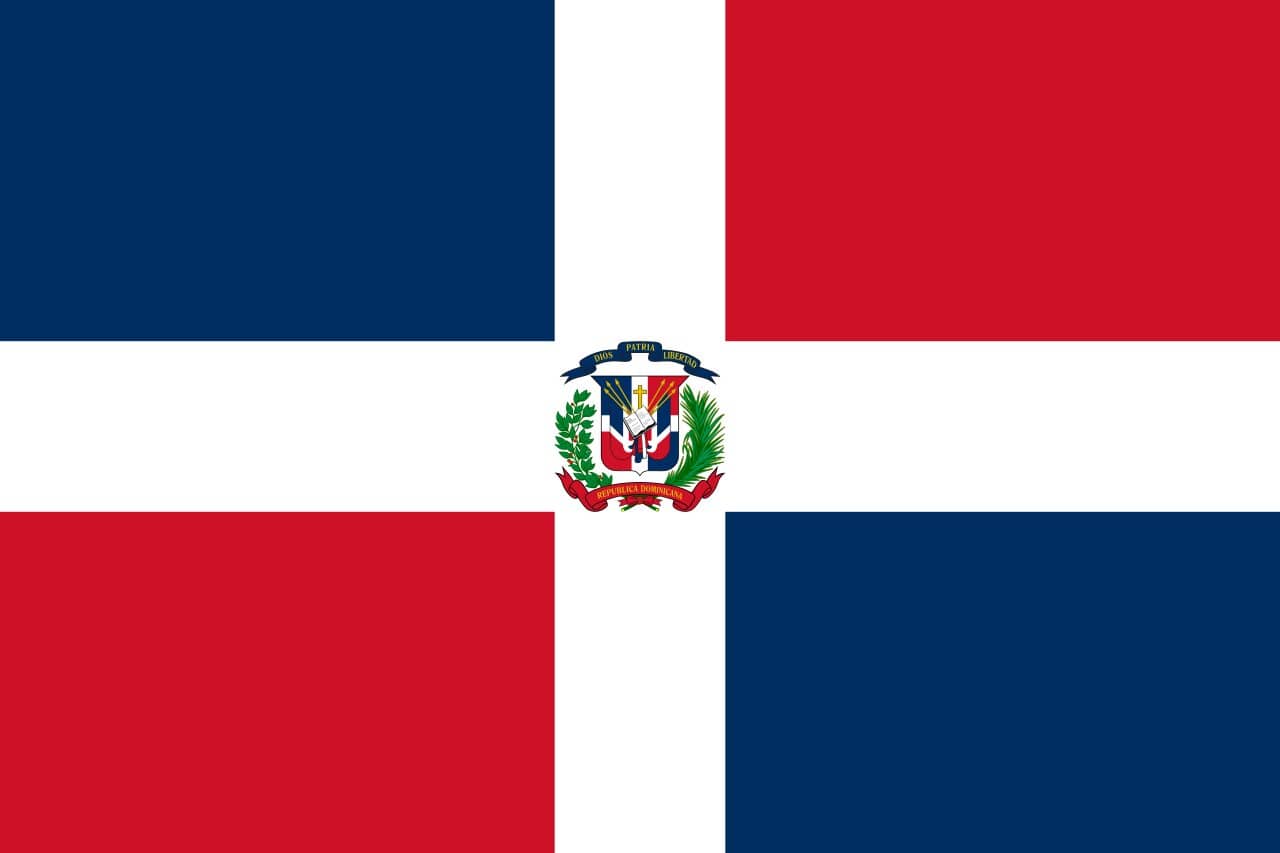
Dominican Republic
Although the Dominican Republic is a Spanish colony, I’d be remiss if I didn’t mention the huge role that Haiti and the Dominican Republic had in shaping the eventual remapping of the entire Caribbean archipelago. In 1492 the first Europeans arrived in modern day Haiti. Christopher Columbus is often credited with establishing the first European settlement in the Caribbean on the island of what he had renamed Hispaniola, indigenously referred to as ‘Quisqueya’ by the native Taino population, who would soon become burdened by European rule, enslavement, and disease. Unrepentant at the decline of the indigenous Taino population and with permission of the Spanish government, Columbus sought to bring the first Africans to the Americas where slavery would be initiated in 1503, a full 100 years before it took root in the United States.
With Hispaniola’s wealth and potential for unbridled growth buoyed by its fertile land and some of the world’s largest gold mines, it wouldn’t take long for prospectors from around the globe to begin closing in on the Caribbean for its resources in a colonial rat race that would be accelerated incomprehensibly by the advent of the Transatlantic Slave trade.

Jamaica
Probably the most referenced island in the Caribbean, Jamaica has contributed to numerous intellectual and cultural pursuits in post war Britain, from doctors, engineers, lawyers, writers, to musicians and sportsmen and women. However, some of the most exceptional members of the Jamaican diaspora in Britain were making their presence felt before HMS Windrush arrived. Arthur Wint was one such character. Arthur was a distinguished student, serviceman and athlete, serving in WW2 as an RAF spitfire pilot, achieving Olympic gold in 1948 in the 400m and then duly leaving the RAF to pursue a medical career, Arthur would qualify as a Doctor at Barts Hospital South London in 1953 and earn himself an MBE.
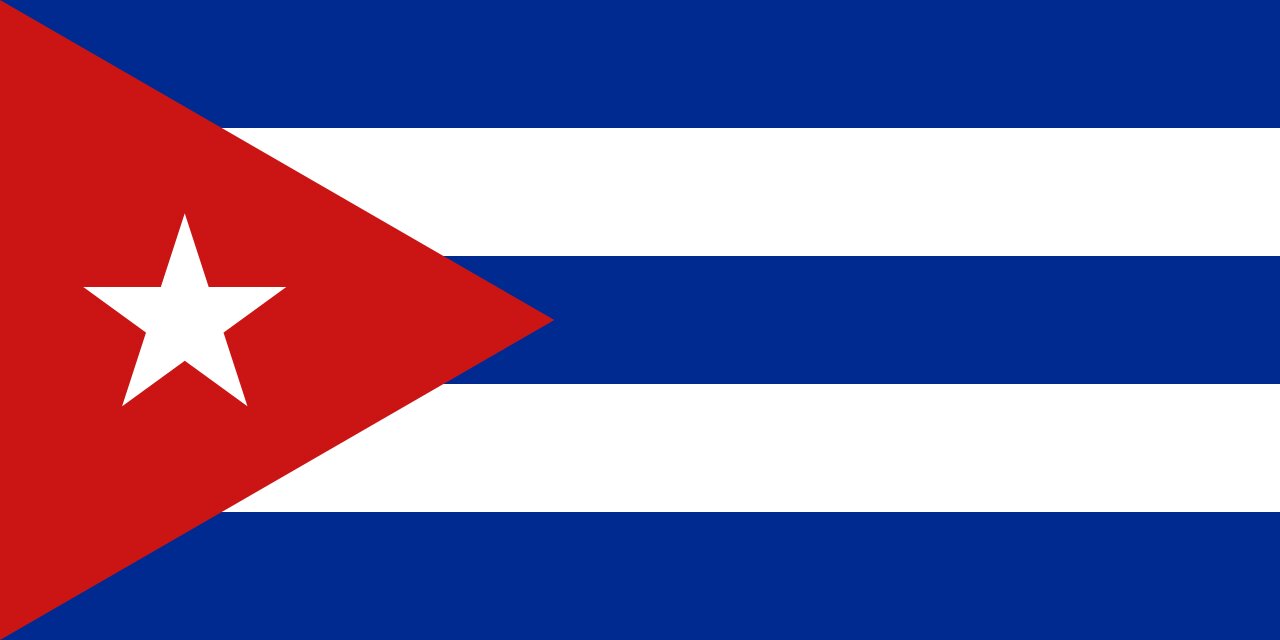
Cuba
The immediate images that people conjure when we refer to Cuba today are usually of Fidel Castro, the communist ideal and the cold war. What isn’t often acknowledged is the transformational period at the turn of the 20th century when Cuba sought extensive labour forces to prop up its sugar industry, which was now in the ascendency. Finding it difficult to recruit from the territories they had already laid claim to, the Spanish turned to neighbouring Caribbean islands, Jamaica being one of them. The anxieties caused by the arrival of British Caribbean subjects in Cuba were not readily quelled, being a predominantly Hispanic society, any threat of foreign influences was not readily well received. The conflict of interest arose when reports that British Caribbean workers in Cuba were being grossly mistreated, underpaid, not paid at all, and in some cases killed. The British response to this was minimal, as they were the largest importer of Cuban sugar at the time.
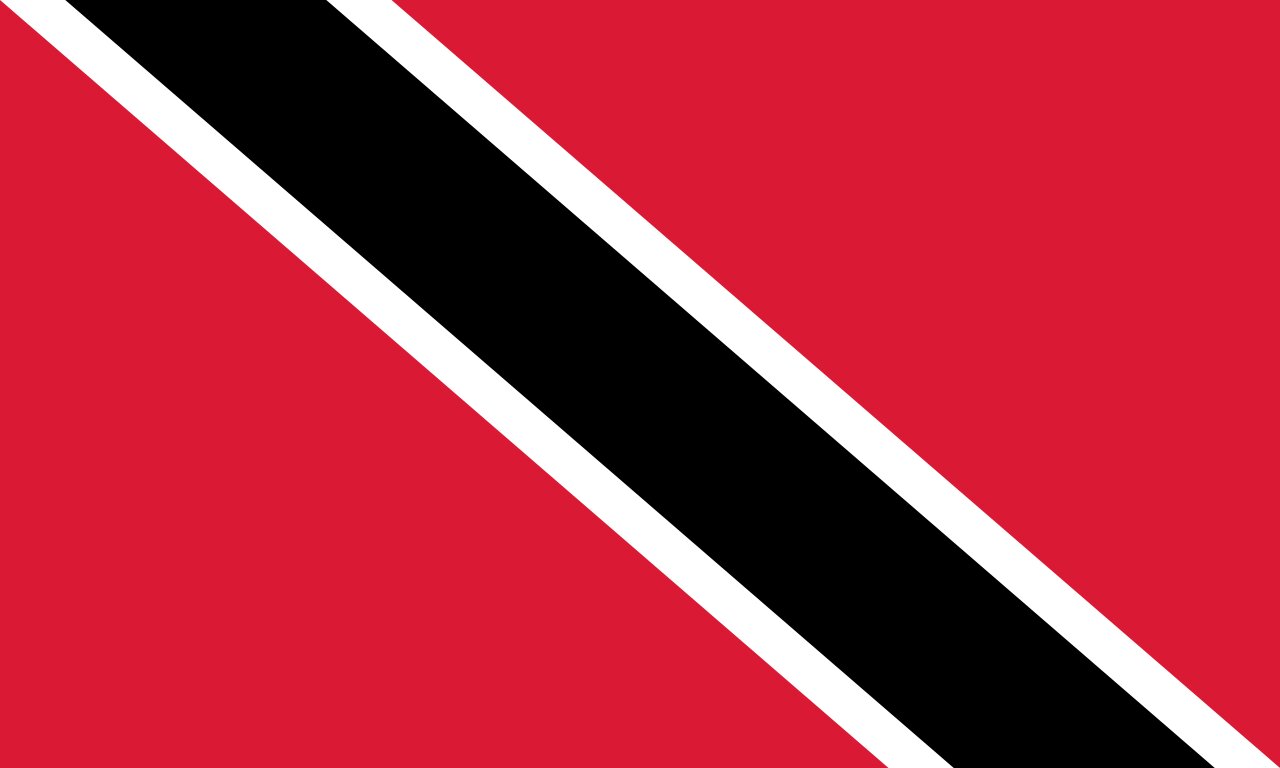
Trinidad & Tobago
Most easily recognisable as the host of one of the most popular carnivals in the Caribbean, Trinidad was the first stop on the Empire Windrush Journey as it ventured north, up, and away from the South American continent and through the Caribbean islands. Again, many children of the Windrush Generation by way of Trinidad have since made their mark in Britain, Sir Trevor McDonald and Darcus Howe two of the more familiar names, but there is one expatriate whose outstanding accomplishments merit special mention. Dr John Alcindor, the ‘Black Doctor of Paddington’, graduated from Edinburgh University in 1899. Dr Alcindor took jobs in various London Hospitals, gaining the skills and recognition that he would later wish to apply to field medicine during WW1, he was rejected by the Royal Army Medical Corps on the grounds of his race. Undeterred by this stance, Dr Alcindor went on to volunteer for the British Red Cross helping the many injured soldiers who returned from duty. Post War, Dr Alcindor would continue his endeavour as a senior medical officer in his local area, passing away in 1924 with little acknowledgement of his contribution to British society, he was finally honoured in 2014, one hundred years on from the start of the War, a plaque installed at Paddington Health Centre, it reads: ‘Dr John Alcindor 1873-1924. Physician, Pan-Africanist and WW1 local hero.’

Aruba
While Aruba was and remains a territory of the Kingdom of the Netherlands, what is often overlooked is the fact that during World War 2, Aruba, centrally governed by the Dutch, had two of the largest oil refineries in the world, this would result in targeted attacks by the Nazis, destroying many of the rigs and tankers at bay. Post war, we don’t have to search too far afield to find examples of citizens who made the bold decision to migrate on a trajectory paralleling that of the more traditionally routed Windrush Generation. Elaine Unegbu, born in Aruba in 1942, made the journey to Britain to work at North Manchester General Hospital. Her hard work, dedication and tireless work ethic saw her transcend racial barriers journeying from staff nurse to ward sister to senior ward sister. Her philanthropic and altruistic sensibilities haven’t waned at all over the years, today she Chairs The ‘Age Friendly Manchester Older People's Board’. Elaine’s life story demonstrates her drive to contribute wherever she can to her community is a nod to the Windrush Generation and the spirit of the people of the Caribbean.
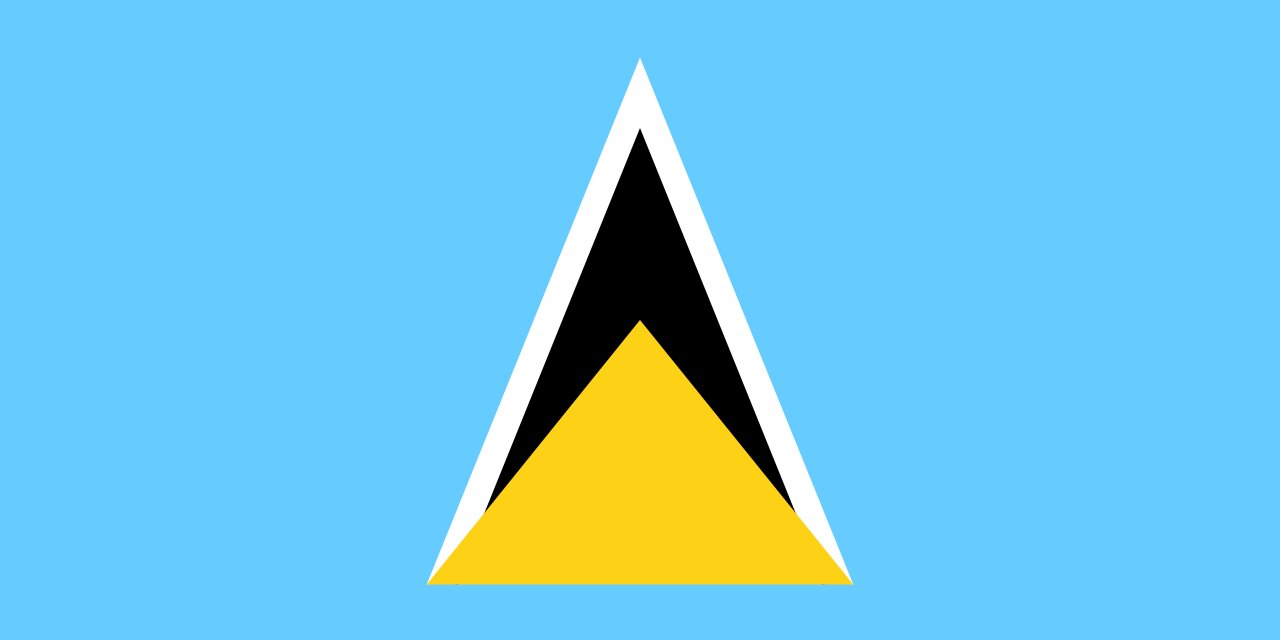
St Lucia
In 1962, aspiring artist Winston Branch moved to London from Castries, St Lucia when he was just 15 years old, he recalls: ‘My parents saw I had an aptitude for art and wanted to give me the best opportunity’. His artwork is heavily influenced by the Caribbean environment, many of his paintings exhibit the bold and vibrant colours paired with an abstract style suggestive of the varied landscapes that exist in the islands, from seascapes, mountain peaks and volcanic belts. One of his most famous paintings, ‘The West Indian’ however, is a stark deviation from this trend. It is the painting of what appears to be a seated man in a woolly hat, looking onwards accompanied by bold strips of colour in the background. An accomplished international artist, Winston’s artwork has been exhibited extensively in many of the world’s leading art institutions over the past fifty years including The Sao Paulo Museum of Modern Art (Muséo de Arte Moderno), The Tate Britain, The British Museum, to name just a few.
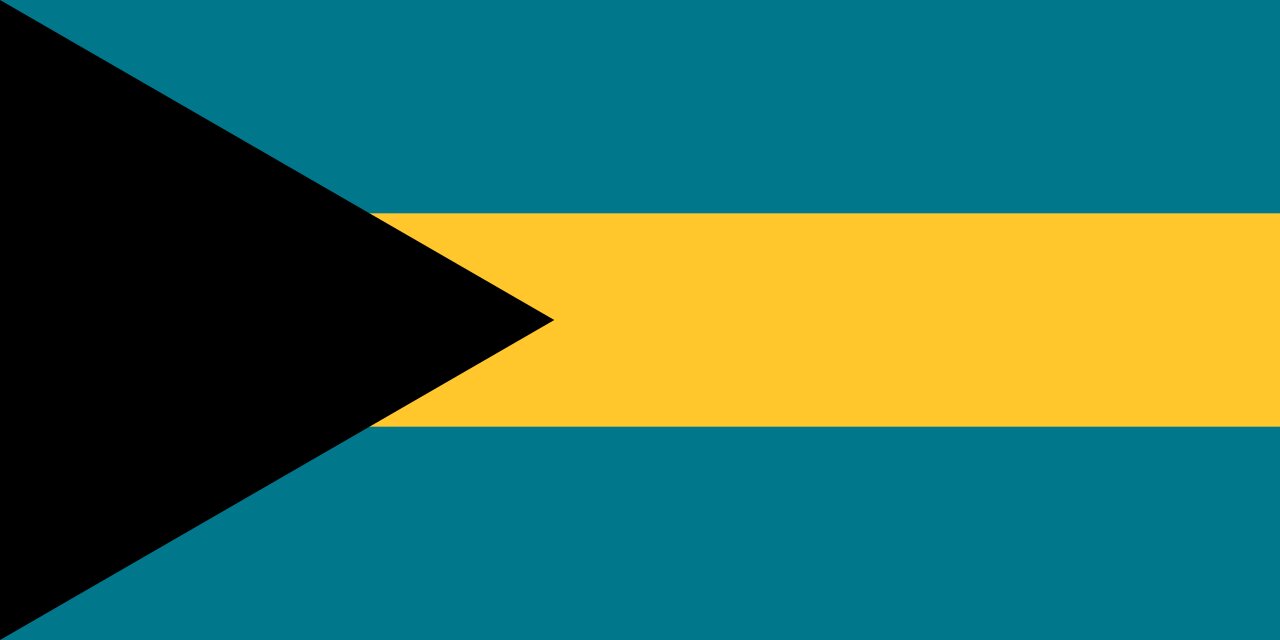
Bahamas
‘Young Men of the Bahamas, The British Empire is Engaged in a Life and Death Struggle’ reads an excerpt from a World War 1 poster from 1915 calling to arms ‘men of every class, creed and colour’. The irony lay in the fact that a few months prior to this, the British had refused to enrol soldiers from the British West Indies, this soon changed when their forces began to become depleted. Many in the Caribbean saw this recruitment drive as a means of legitimising their movement for civil rights and ultimately Independence for West Indian nations, gaining parity by proving their worth as being just as valuable as their ‘British’ counterparts. The British West Indies Regiment of over 60,000 all played a role in the war effort, but until very recently, their contributions to the war were seldom referred to in the public domain.
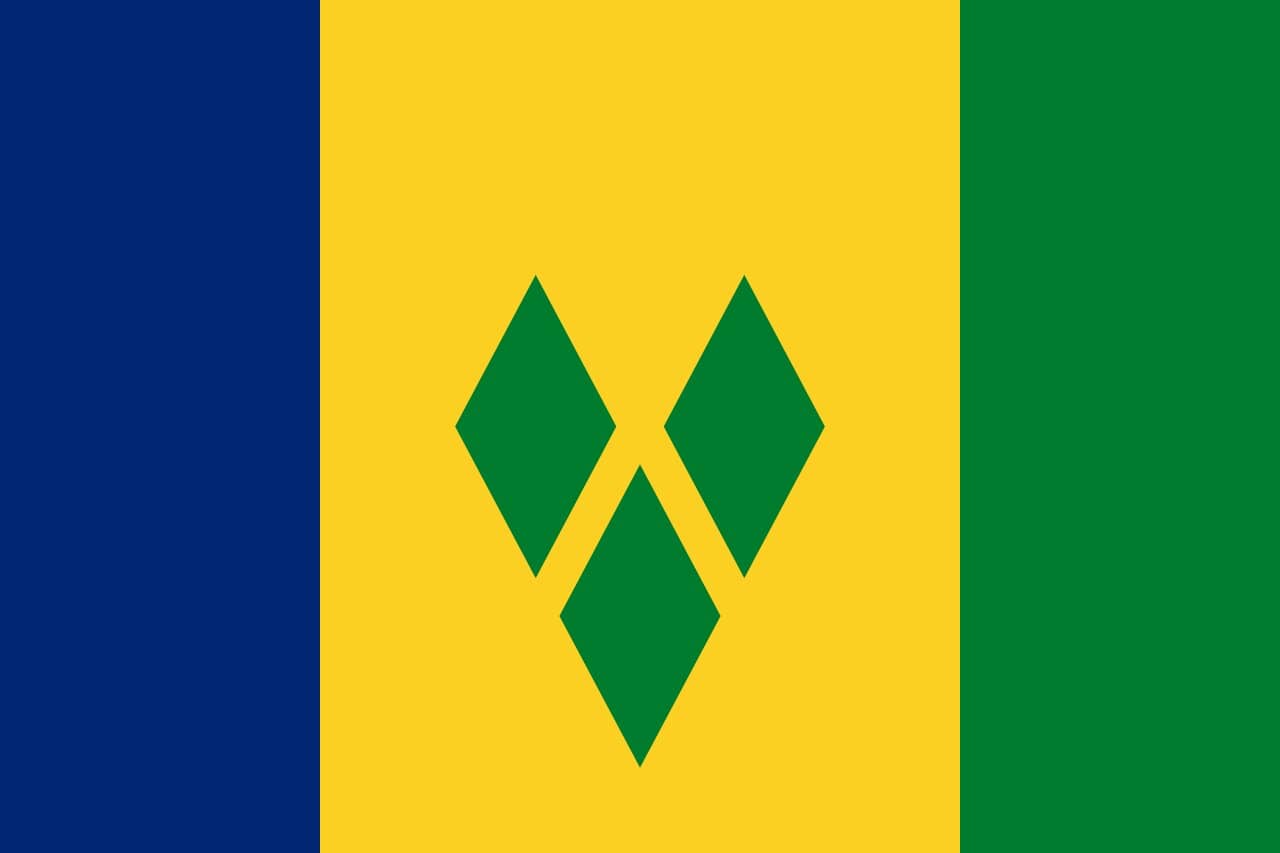
St Vincent
Janet Nickie, a St Vincentian Nurse recalls her first encounter with her newfound reality of life in England ‘When I first see London, I say ‘Oh, this is London, the Queen’s country?’ I find it very dirty. But I didn’t find it hard to adjust, because when I come, I come with the sunshine in my bones’, Janet is a testament to the steel hardiness and optimism that imbued many Caribbean expatriates in the face of racism in a foreign land and the can-do attitude that would ensure success for her and her family.
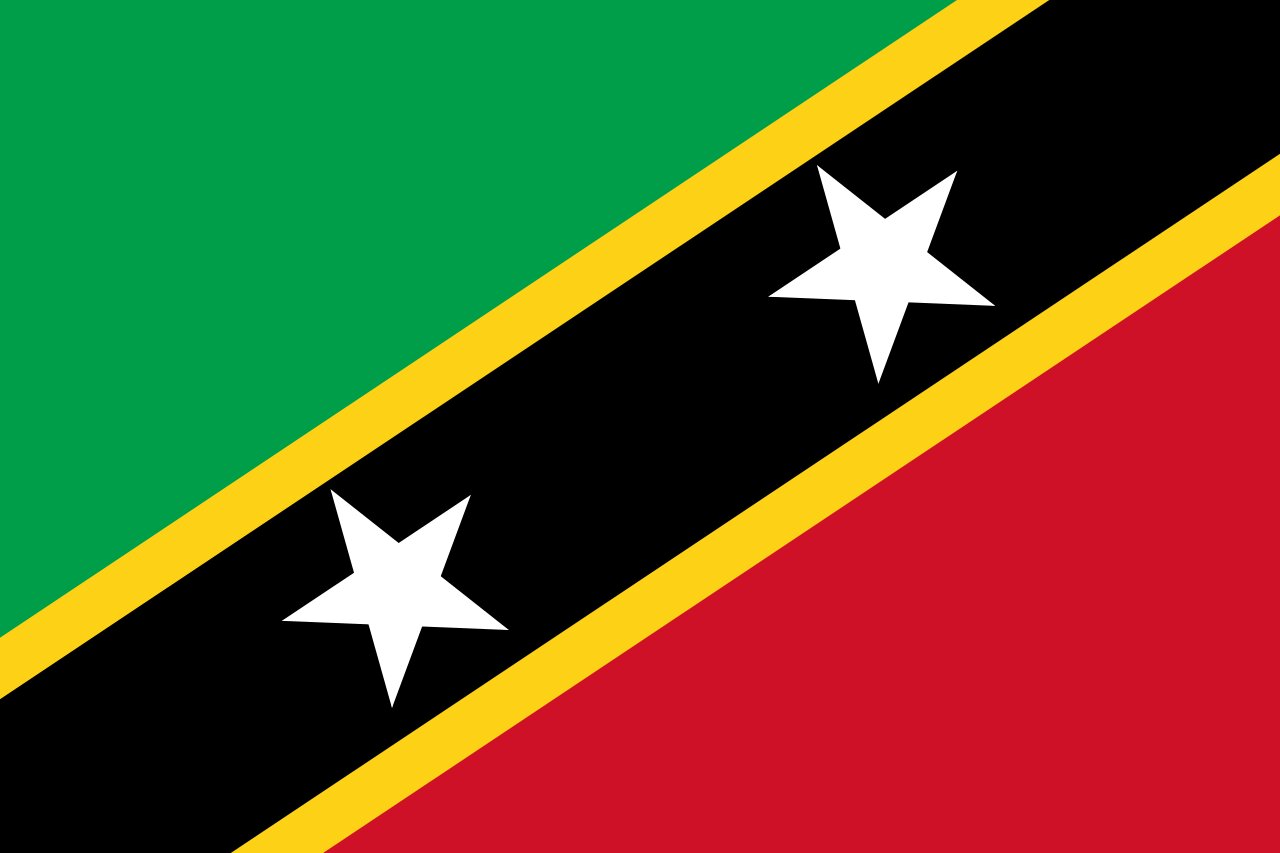
St Kitts and Nevis
Gertrude Meretta Paul came to England from St Kitts in 1956 already holding a qualification in teaching, she found that upon her arrival, this would not be recognised. Resolute in her calling to educate, she would resolve to attain this British equivalency and become the first black teacher in Leeds. Gertrude would go on to become a headteacher and set up various initiatives, including the UK’s first ever Saturday school, helping assist young people with their reading and numeracy skills. Much like Malcolm X, she strongly believed that ‘education is the passport to the future’. Gertrude would go on to be instrumental in the conception of the Leeds Carnival, co-founding with fellow Nevisian and Leeds University alumni Arthur France in 1967 to celebrate West Indian culture. Gertrude Paul sadly passed away in 1992, but her legacy lives on and her passion for education has been championed by the Leeds Beckett University setting up a scholarship programme in her name.
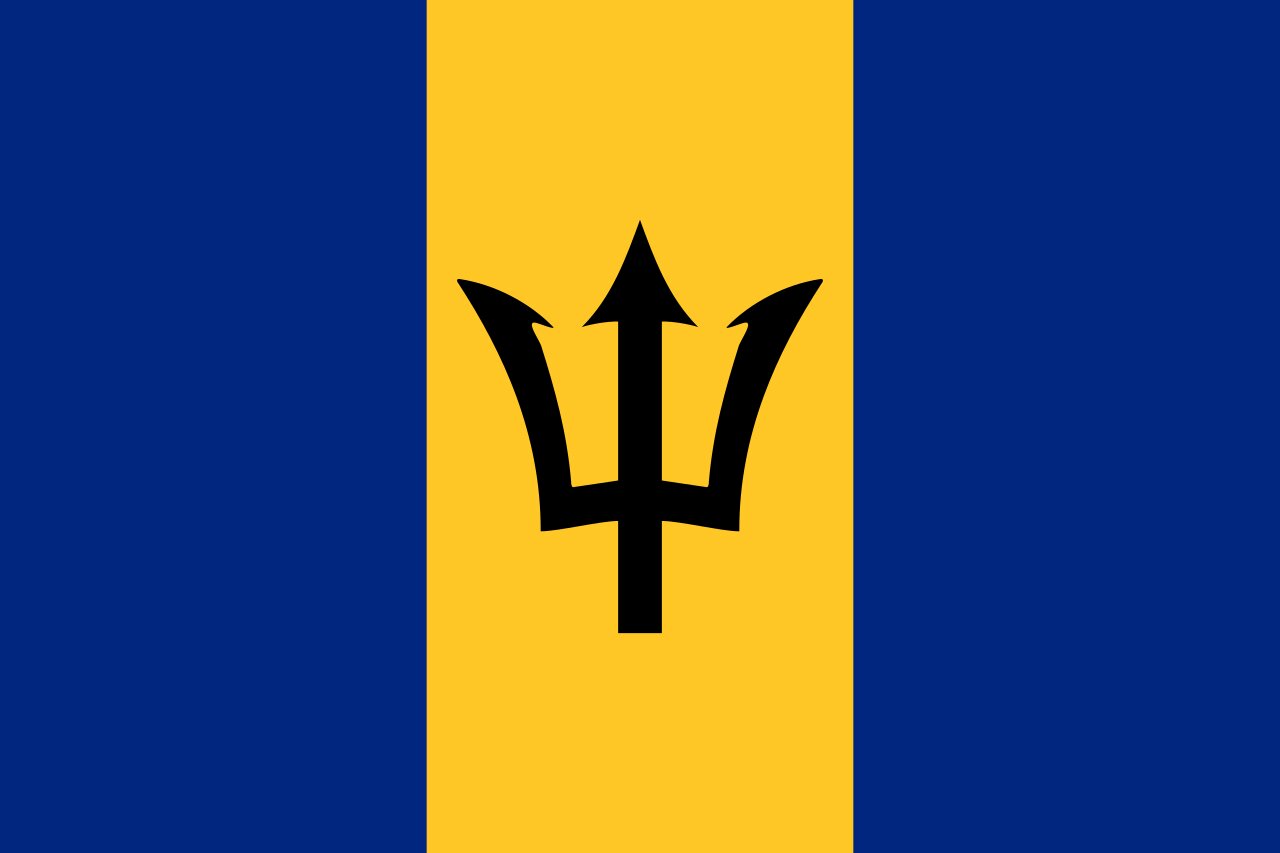
Barbados
In 1956, London Transport were facing mass staff shortages and looked to the Commonwealth for relief. In partnership with the Barbadian government, London Transport set up a direct recruitment scheme from the island, establishing a recruitment hub in the capital, Bridgetown. The Barbadian government offered loans to cover the cost of travel to those who wished to make the move to Britain. Vacancies for stationmen and women, bus, and train drivers, as well as maintenance and administrative roles were on offer for applicants. London Transport didn’t prove to be the transparent meritocracy it was promised as many new joiners found there to be a very real glass ceiling in effect as they struggled for promotions and better pay, this was overcome by the campaigns of the West Indian Standing Conference.
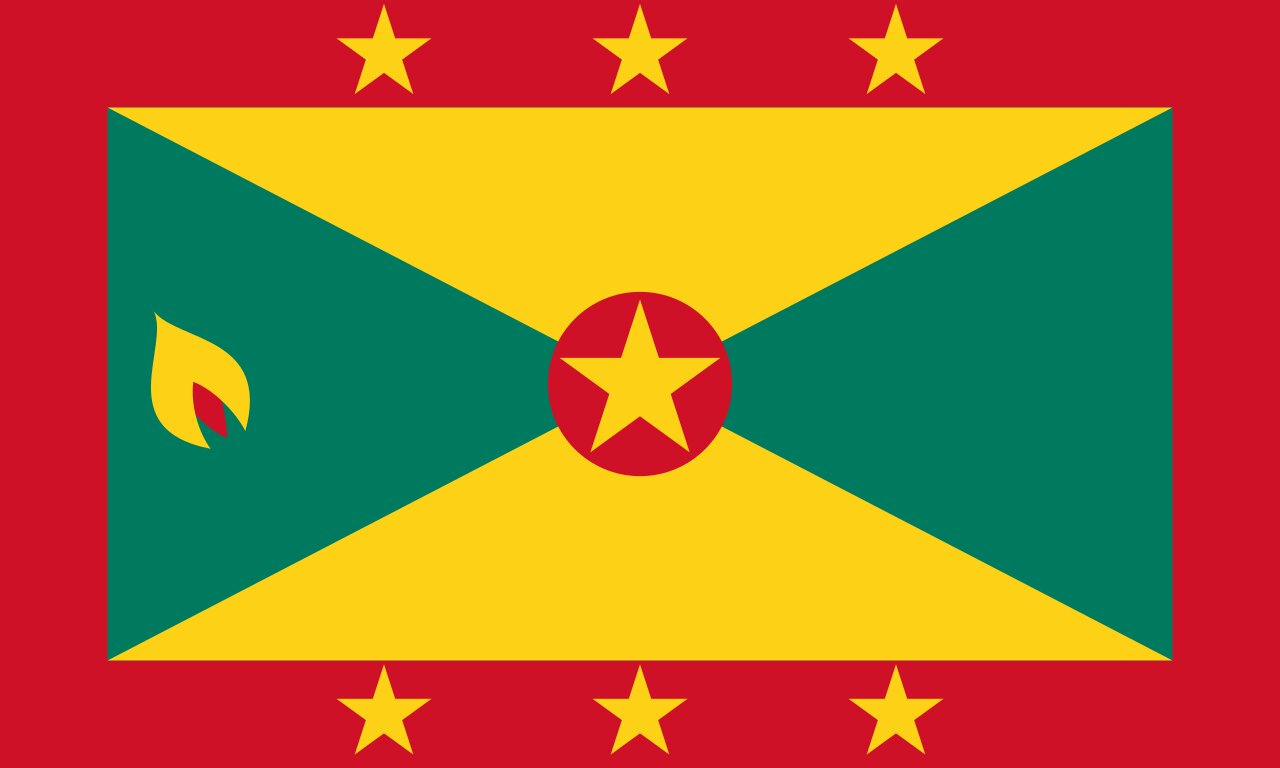
Grenada
British Caribbean lawyer Jacqueline McKenzie, of both Jamaican and Grenadian heritage, has been advocating tirelessly for those implicated in the Windrush Scandal which surfaced in the public discourse in 2018. The Scandal itself was the culmination of successive legislations by consecutive UK governments to try to disqualify and invalidate citizens right to remain in the country. Since then, Jacqueline has gone on to represent over 200 British citizens who were wrongly classified as illegal immigrants in the UK and continues to support the victims of this scandal to this day.
